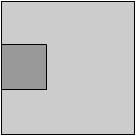It is vital to establish present and future space requirements before you embark
on your search. The physical size and core configuration
of an office will shape your corporate culture and affect employee efficiency.
There are many considerations to be made during the space selection process.
Measuring Space
There are various methods to measure space in the New York City real
estate market. It is important to understand the different concepts because costs vary according to the method of measuring space. (Please also refer to our Glossary for further explanation.)
| Concept | Formula | Example(1) |
| Rentable Sq. Ft. | Common + Usable | 500 + 2,000 = 2500 |
| Loss Factor | Common / Rentable | 500 / 2,500 = 20% |
| Add-On Factor | Common / Usable | 500 / 2,000 = 25% |
|
(1) For this example, Common = 500 Sq. Ft. and Usable = 2,000 Sq. Ft. Remember: Carpetable ≤ Usable ≤ Rentable |
||
- Retail Measurements
- Retail space is considered the actual amount of usable space; the loss factor is excluded because the space is leased as a self-contained unit. Therefore the space excludes any lobbies, common corridors, or shared bathrooms.
Core Configuration
Core configuration identifies the location of a building's mechanical center, which houses the elevator banks, emergency staircase, plumbing, electricity, and HVAC.
Two types of core configurations are common: side core and center core.
The side core configuration allows for more open area in the middle, such as a newsroom. The center core
configuration permits more traditional office uses, such as a law firm.
 Side Core Configuration |
 Center Core Configuration |
Floor Plate Size
A floor plate is a diagram that represents the structure and core configuration of a building's entire floor. The size of the floor plate becomes important when determining the interactive flow between your company's divisions. This analysis will identify the size of floor plate you will need and the required proximities of the different divisions for your business to operate efficiently.
Space Planner
Use our space planner to help assess your company's space needs. Complete fields with your estimates for offices, cubicles, conference rooms and other areas. The planner will calculate your total square footage by adding up the areas you have selected, taking into account all add-on factors.
Options for Future Space Needs
In real estate leases, an option is the right of first consideration. The most common options negotiated are the option to expand, contract, renew, or cancel. These options give the tenant flexibility and, therefore, will be a cost to the tenant. Remember, there wording of options is full with subtleties so consult your advisor and real estate attorney before you sign or renew a lease.
Fractional Office Space
Fractional office space is intended to provide a new or existing company with ready-to-go offices on demand. Arrangements are made via leasing agreements and are usually on a month-to-month term. Services include, but are not limited to, office space, furniture, telecommunication equipment, conference facilities, training rooms, and office support systems.
Incubators
Incubators provide immediate space and guidance to foster a new company’s growth. Typically, this service is provided for a portion of the company’s stock. Incubators provide space and services, such as advising new companies on writing business plans, marketing, legal issues and management structure.